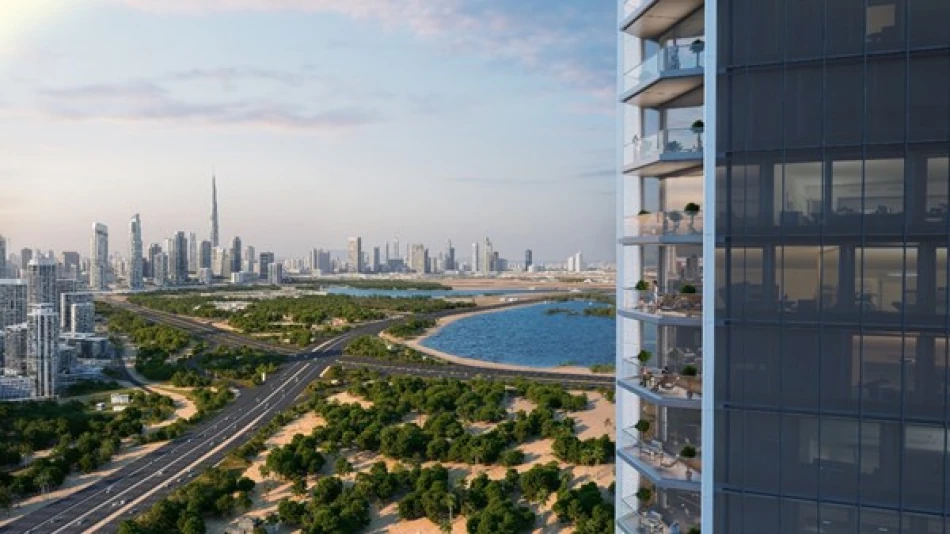
Dubai's Luxury Living Redefined: Shoba Briefi Group Caters to Wealthy Influx
Dubai's Ultra-Luxury Housing Market Evolves to Capture Global Millionaire Migration Wave
Dubai's real estate landscape is undergoing a dramatic transformation as the emirate prepares to welcome the world's largest influx of high-net-worth individuals by 2025. With nearly 10,000 millionaires expected to relocate to the UAE, developers are racing to redefine luxury housing beyond traditional opulence, creating properties that blend architectural innovation with investment-grade exclusivity.
The Great Millionaire Migration: Dubai's Strategic Advantage
According to Henley & Partners research, the UAE is positioned to receive approximately 9,800 millionaire residents by 2025—the highest globally. This unprecedented wealth migration stems from Dubai's zero personal income tax policy, political stability, and strategic location bridging East and West markets. Unlike previous cycles focused on oil wealth, this wave represents diverse global capital seeking secure, high-growth jurisdictions.
The influx mirrors Singapore's transformation in the 1990s and Switzerland's historical appeal to international wealth, but with a crucial difference: Dubai's rapid infrastructure development and regulatory modernization are happening in real-time, creating immediate opportunities for early movers.
Beyond Traditional Luxury: The New Ultra-High-End Paradigm
The incoming wealth demographic demands more than conventional luxury amenities. These buyers seek properties that function as generational assets, combining architectural distinction with privacy, exclusivity, and long-term value appreciation. This shift is driving developers to create limited-edition residential collections rather than mass luxury developments.
Market Response: The Sobha Privé Strategy
Sobha Realty's launch of the Sobha Privé collection exemplifies this market evolution. The developer's "Art of Detail" philosophy targets ultra-high-net-worth buyers through seven core principles: expansive spaces, prestigious locations, precision craftsmanship, premium service, exclusive amenities, maximum privacy, and unique architectural expression.
This approach reflects broader market intelligence: today's luxury buyers prioritize scarcity and customization over standardized opulence. Each Privé unit functions as a private sanctuary, designed to appreciate both aesthetically and financially over decades.
Architectural Innovation Meets Investment Logic
The collection spans multiple flagship projects, including villas in Sobha Hartland 2, penthouses in Sobha SeaHaven, and the iconic "The S" tower on Sheikh Zayed Road. The newest addition, "The S" in Sobha Hartland 2, demonstrates how architectural innovation can create scarcity value.
The S Tower: Engineering Exclusivity
The 71-story tower's equilateral triangle design isn't merely aesthetic—it's strategically functional. The geometry enables only two units per floor, each with villa-sized footprints and 270-degree panoramic views of Downtown Dubai. Four-meter ceiling heights and continuous glass facades create spatial luxury that traditional square towers cannot match.
This design philosophy addresses a critical market insight: ultra-wealthy buyers increasingly prefer unique architectural statements over generic luxury boxes, even at premium prices.
Market Implications and Investment Perspective
The ultra-luxury segment's evolution carries significant implications for Dubai's broader real estate market. As supply tightens in the premium category, secondary luxury developments may benefit from overflow demand. However, the growing sophistication of buyer expectations could pressure mid-tier luxury developers to enhance their offerings or risk obsolescence.
Comparative Regional Context
Dubai's ultra-luxury strategy differs markedly from regional competitors. While Qatar focuses on cultural luxury and Saudi Arabia emphasizes megaproject scale, Dubai is positioning itself as the region's exclusive residential destination for established international wealth. This specialization could prove decisive as global economic uncertainty drives flight-to-quality investment behavior.
The success of projects like The S will likely influence regulatory policy, potentially leading to more favorable residency terms for ultra-high-net-worth buyers and stricter quality standards for luxury developments.
Long-term Market Trajectory
Dubai's transformation into a global luxury residential capital represents more than cyclical growth—it signals structural economic diversification. As traditional safe-haven markets like London and New York face regulatory pressures, Dubai's combination of tax efficiency, political stability, and lifestyle quality creates a compelling value proposition for international wealth.
The millionaire migration trend, if sustained, could establish Dubai as the world's premier luxury residential market by 2030, with implications extending far beyond real estate into banking, retail, and cultural sectors. For investors, this represents a generational shift in global wealth distribution patterns, with Dubai positioned as the primary beneficiary.
Most Viewed News

 Layla Al Mansoori
Layla Al Mansoori






